Soft and fluffy gluten-free pancakes made with wholesome oat flour. This classic variation is endlessly customizable! Easily sub milk for buttermilk, make them dairy-free, or add chocolate chips, blueberries, or sprinkles. Sunday brunch never tasted so good!
This classic fluffy gluten-free pancake recipe is long overdue. Years, in fact. It's the original recipe used as the base and adapted into these gluten-free pumpkin pancakes. While I love pumpkin pancakes, the truth is, unless it's pumpkin-spice season, it's these classic vanilla-scented fluffy oat flour pancakes I fry up again and again.
So it's about time I share this infinitely customizable classic gluten-free buttermilk pancakes recipe.
These pancakes are my kids' most-requested recipe - shockingly even more so than cake or cookies! Possibly in small part because pancakes mean they get to raid my sprinkles collection, but also because they know these thick and lofty pancakes are the best way to start any Sunday. It's become a family affair - they do the weighing and mixing, I do the frying and flipping.
If you're looking for a way to brighten your mom's morning, might I strongly encourage a breakfast-in-bed gluten-free pancake delivery? (Lucas, are you reading this?)
Gluten-Free Oat Flour Pancakes
Before developing this gluten-free pancakes recipe, I thought I hated pancakes. Waffles, I'd say, were far superior. With this recipe in the regular weekend rotation, I'm a pancake convert. Read more about the inception of this classic recipe and my change of heart about pancakes in my gluten-free pumpkin pancakes post. Spoiler: I have Curious George to thank.
These gluten-free buttermilk pancakes are so much more flavorful than their glutenous counterparts. Made with wholesome whole grain oat flour, these lofty pancakes fry up with crispy edges and a super soft, moist, and fluffy center.
Honestly, it's like crispy fried cake, and if that doesn't sound like the perfect breakfast...
Make-ahead gluten-free pancake mix
To make your gluten-free pancakes come together even quicker, sift together individual jars or bags of all the dry ingredients to store in the pantry. Just add buttermilk, butter, vanilla, and eggs and go!
This recipe uses gluten-free oat flour, sweet rice flour, and tapioca flour.
Gluten-free oat flour creates the cakey soft center and drives the wholesome sweet whole grain flavor profile. It keeps the pancakes moist, but still light. Oats are also super nutritious with healthy proteins and fats. If you don't have oat flour, you can make your own by grinding gluten-free rolled oats in a food processor or blender and sifting out any big pieces. In fact, homemade oat flour tends to cook up just a bit fluffier!
Sweet rice flour creates the chewy texture and helps bind the pancakes together. Sweet rice flour is distinctively different than white rice or brown rice flour. Rather it is the same flour used to make mochi, and as such, it adds a slight chewiness.
Tapioca starch similarly helps with binding, but also contributes to the fluffiness of the pancakes, while helping the edges crisp up.
How to make gluten-free pancakes from scratch
Here are the steps to making these easy gluten-free pancakes:
- Sift together all the dry ingredients in a large bowl.
- Lightly whisk together buttermilk, egg yolk, and vanilla then pour it into the dry ingredients, giving it a couple of stirs with a fork or rubber spatula.
- Stir in the melted butter until almost combined with a few dry flour steaks and several lumps remaining.
- Lightly whisk the egg white in a small bowl with a fork for a few seconds to loosen then fold it into the batter with a fork or rubber spatula until just combined and no streaks of flour are visible, but several lumps still remain. Let sit for 5 minutes while you preheat the griddle.
- Cook on a greased skillet or griddle over low heat for 2-3 minutes, flip, and repeat until cooked through!
- Serve warm with maple syrup and fresh fruit.
Separating Egg Yolk and White
The trick to the lightest fluffiest pancakes is to separate the egg yolk and white.
Years ago when making these pancakes, I would separate and whip the egg whites before folding them in. However, when Erica did the best pancake bake-off, she found whipping the egg white didn't change pancakes much if at all. Instead, she found, the key was just keeping the egg white separate and mixing it in last. Sure enough, that worked great for these pancakes.
I also did a side-by-side comparison where I didn't separate the egg whites, and instead mixed the whole egg in with the buttermilk. The whole egg unseparated version turned out gummy and much denser. I'm not sure why it works this way, but it does!
To separate the egg whites, lightly crack an egg all the way around on a small bowl, carefully open it up over the bowl, keeping one side lower so the yolk stays in the shell.
Pour the yolk into your hand with your fingers slightly separated so the white separates and falls into the bowl. Place the yolk right into the buttermilk.
What does buttermilk do to gluten-free pancakes?
Using buttermilk in your pancakes adds a slight tang with a richer more flavorful crumb.
The acid in buttermilk also activates the baking soda, giving the batter more lift so the pancakes bake up light and fluffy.
Homemade Buttermilk Substitute
Don't have buttermilk? No problem. You can make your own buttermilk substitute out of milk or plant milk and vinegar or lemon juice.
While buttermilk pancakes are, in my opinion, the gold standard of pancakes, I rarely have buttermilk on hand when my kids make pancake pleas. More often than not, I use this homemade buttermilk substitute variation. The results are slightly less tender, but unless you're carefully tasting the pancakes side-by-side against the original buttermilk version, you won't notice a difference.
To make this homemade buttermilk hack: add 1 tablespoon white vinegar or lemon juice to a measuring cup, then add milk (dairy or plant-based) until you have 1 cup total liquid. Let it rest for 5 minutes before using it so the acid can begin curdling the milk.
Because milk is thinner than buttermilk, if you just swap it in cup-for-cup, you'd end up with thin flapjacks (if that's your thing, go for it!). To get the same lofty fluffy pancakes, increase the flour measurements as written below.
Flour adjustment for buttermilk substitution and dairy-free versions:
- 1¼ cups + 2 tablespoons (149g) gluten-free oat flour
- ¼ cup + 3 tablespoons (70g) sweet rice flour or mochiko
- 3 tablespoons (21g) tapioca flour
Gluten-Free Dairy-Free Pancakes Substitution
This recipe can also easily be made dairy-free. To make gluten-free and dairy-free pancakes, sub the butter with plant butter.
Make the homemade buttermilk substitute listed above using your favorite plant milk, making the flour adjustments outlined above in the homemade buttermilk substitution section.
Tips for making the best fluffy gluten-free pancakes
- Adjust pan heat for your stove or griddle. Depending on the heat and size of your burner, you may need to adjust the heat so the pancakes cook slowly. If you notice the crust getting dark too quickly before the center finishes cooking, reduce the heat or use a smaller burner. On my high-power gas stove, I use my two lowest heat burners for pancakes and set the heat to medium-low.
- Take care not to overmix the batter. Mix the batter just until there are no more flour or egg white streaks and no longer. There should still be plenty of lumps remaining. Overmixing the batter will lead to dense and gummy pancakes.
- Let the batter rest before cooking. This will allow the flours to soak up the moisture, the baking soda to start activating, and the batter to thicken.
- Use a trigger ice cream scoop for perfectly round pancakes. If you want perfectly round uniformly-sized pancakes, I recommend using trigger ice cream scoop. Most are exactly ¼ cup and the trigger will push out all the batter in perfectly round circles!
- Customize with favorite mix-ins. These classic plain pancakes can be customized to your liking! Lightly fold in ½ cup chocolate chips, 1 cup fresh or frozen blueberries, 2 tablespoons sprinkles, or other favorite add-ins to the batter at the very end.
How to store leftover pancakes
Leftover pancakes?! With this recipe, we never have leftover pancakes. That being said, I've doubled the recipe and stored extra pancakes in an airtight container in the fridge for up to 3 days or the freezer for up to 6 months for quick weekday breakfast smiles.
To freeze pancakes, let the cooked pancakes cool, then place them in a single layer on a baking sheet in the freezer for an hour before stacking in an airtight container or freezer bag.
Whether using from the fridge or the freezer, reheat by popping the pancakes in the toaster to heat through.
Top with maple syrup and fresh berries, and deliver a pancake stack to your mom as the ultimate breakfast in bed.
More Gluten-Free Brunch Recipes
- Gluten-Free Pumpkin Pancakes
- Gluten-Free Chamomile Waffles
- Buckwheat Crepes
- Gluten-Free Blueberry Muffins
- Gluten-Free Cinnamon Rolls
- Carrot Cake Baked Oatmeal
- Hashbrown Breakfast Pizza
Recipe
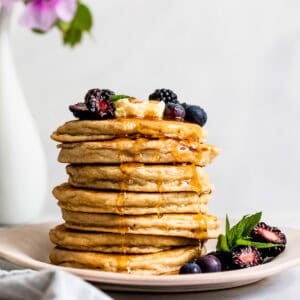
Gluten-Free Pancakes
Ingredients
- 1 cup buttermilk, see note for milk or dairy-free subsitution
- 1 cup + 2 tablespoons (122 g) gluten-free oat flour, you can make your own by grinding and sifting gluten-free rolled oats in a food processor or blender
- ¼ cup + 1 tablespoon (50 g) sweet rice flour, also called mochiko, different from "white rice flour" or "brown rice flour" - I recommend Koda Farms or Bob's Red Mill
- 3 tablespoons (21 g) Bob’s Red Mill tapioca flour
- 1 tablespoon granulated sugar
- ¾ teaspoon baking powder
- ½ teaspoon baking soda
- ½ teaspoon kosher salt
- 1 large egg, egg white and yolk separated
- 1 teaspoon pure vanilla extract
- ¼ cup unsalted butter, melted and slightly ooled (plus more for the pan)
INSTRUCTIONS
- Preheat the oven to 225°F to keep your pancakes warm as you make the rest. Place a baking rack on top of a baking sheet and set it inside the oven.
- If using the buttermilk substitution or dairy-free option (below), prepare the homemade buttermilk substitute and set aside.
- In a large mixing bowl, sift together oat flour, sweet rice flour, tapioca flour, sugar, baking powder, baking soda, and salt.
- Lightly whisk the egg yolk and vanilla into the buttermilk then add it to the dry ingredients. Gently mix it with a fork or rubber spatula a couple of times, then pour in the melted butter. Mix until almost combined (with a few dry streaks and several lumps remaining).
- Gently whisk the egg white in a small bowl with a fork for a few seconds to loosen then add it to the batter, gently folding it in with the fork or rubber spatula until just combined and no streaks of flour are visible, but several lumps still remain. If adding mix-ins like chocolate chips, blueberries, or sprinkles gently fold them in a couple of times, taking care not to overmix. Let sit for 5 minutes while you preheat the griddle.
- Cook the pancakes low and slow - I recommend using the smallest burner on your stove. Preheat a non-stick pan or griddle over low heat (if using a really small burner, you might find medium-low heat works best). Grease lightly with butter, ghee, or cooking spray, then add a heaping ¼ cup batter and gently spread out into 3-inch pancakes with the back of the spoon (I use an ice cream scoop for the batter). Let cook for 2-3 minutes, until the bottom is lightly browned, but not burnt and the edges start to look dull and cooked (you may notice 1-2 bubbles come to the surface and pop). Flip the pancake and cook for 2-3 minutes on the other side until the pancake is cooked all the way through. The center should bounce back when touched gently (if it does not, then the center is not cooked, so reduce heat and cook a bit longer). If you notice your pancakes are browning too quickly before the center can cook entirely, adjust your heat or transfer to a smaller burner.
- Transfer the cooked pancakes to the prepared baking rack to stay warm while you repeat with the remaining batter.
- Serve warm with butter, maple syrup, fresh fruit, or other favorite toppings!
Notes
Buttermilk Substitution and Dairy-Free Option
You can make your own buttermilk substitute out of milk or plant-milk and vinegar or lemon juice, but because it's thinner than buttermilk, increase the flour measurements as written below. For dairy-free, replace the butter with a plant butter alternative. While I slightly prefer the buttermilk version, most often, I use the milk + vinegar option because I don't often have buttermilk on hand when I get the whim to make pancakes. To make homemade "buttermilk": Add 1 tablespoon vinegar to a measuring cup then filling it with milk (or plant-milk) to equal 1 cup. Let it rest for 5 minutes while you prepare the remaining ingredients. Flour adjustment for buttermilk substitution and dairy-free versions:- 1¼ cups + 2 tablespoons (149g) gluten-free oat flour
- ¼ cup + 3 tablespoons (70g) sweet rice flour or mochiko
- 3 tablespoons (21g) tapioca flour


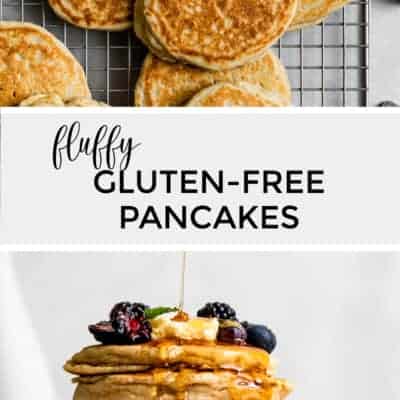
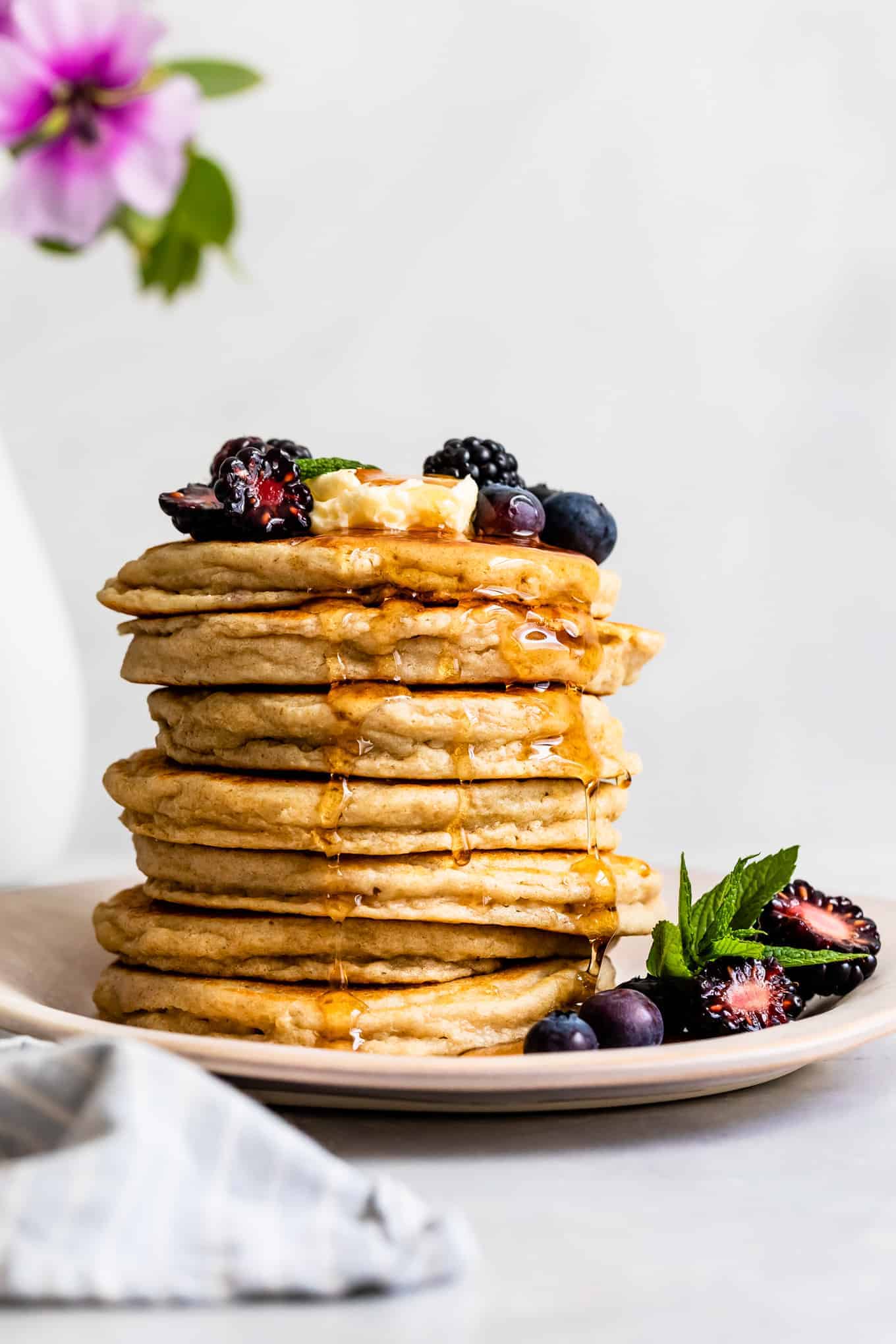
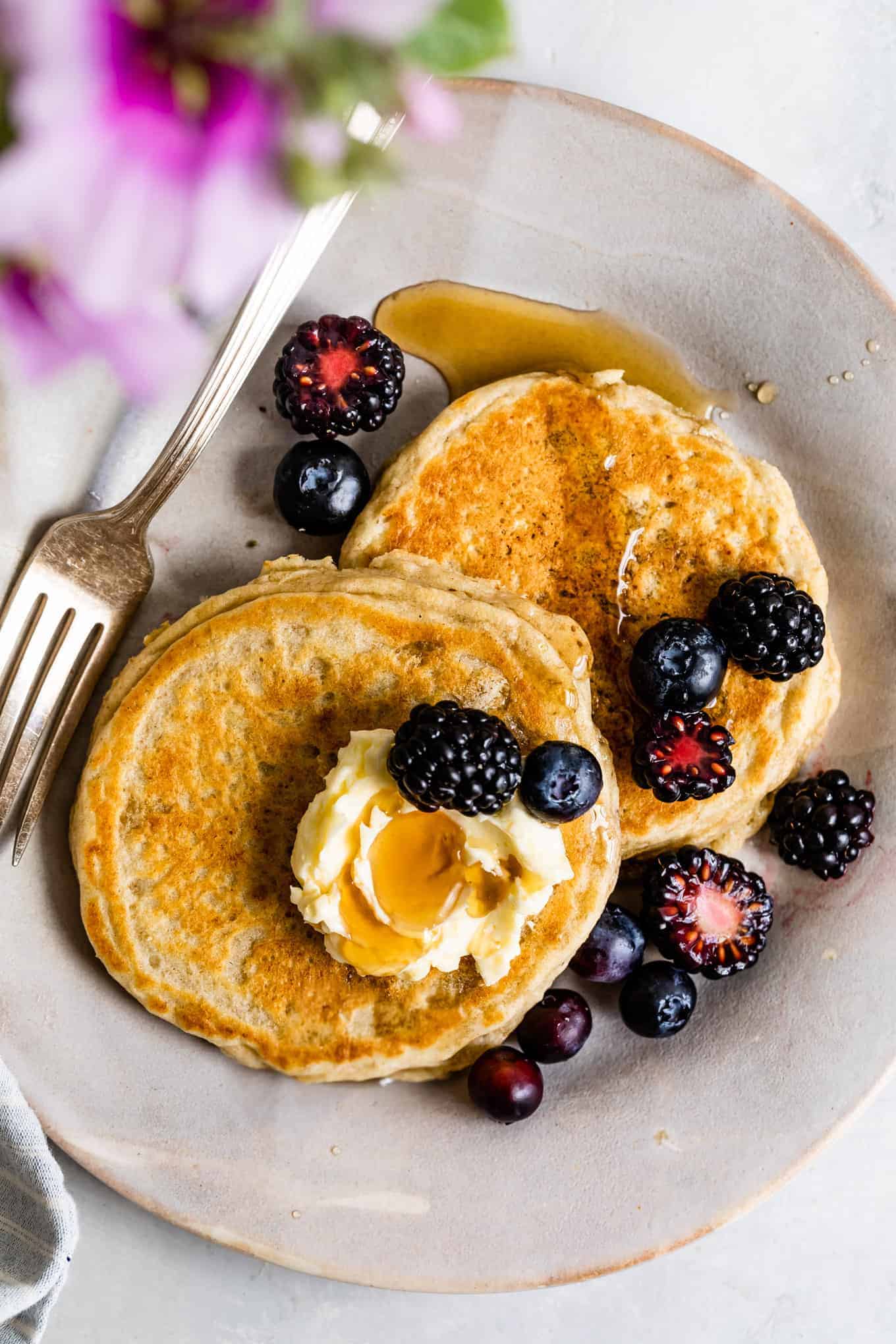


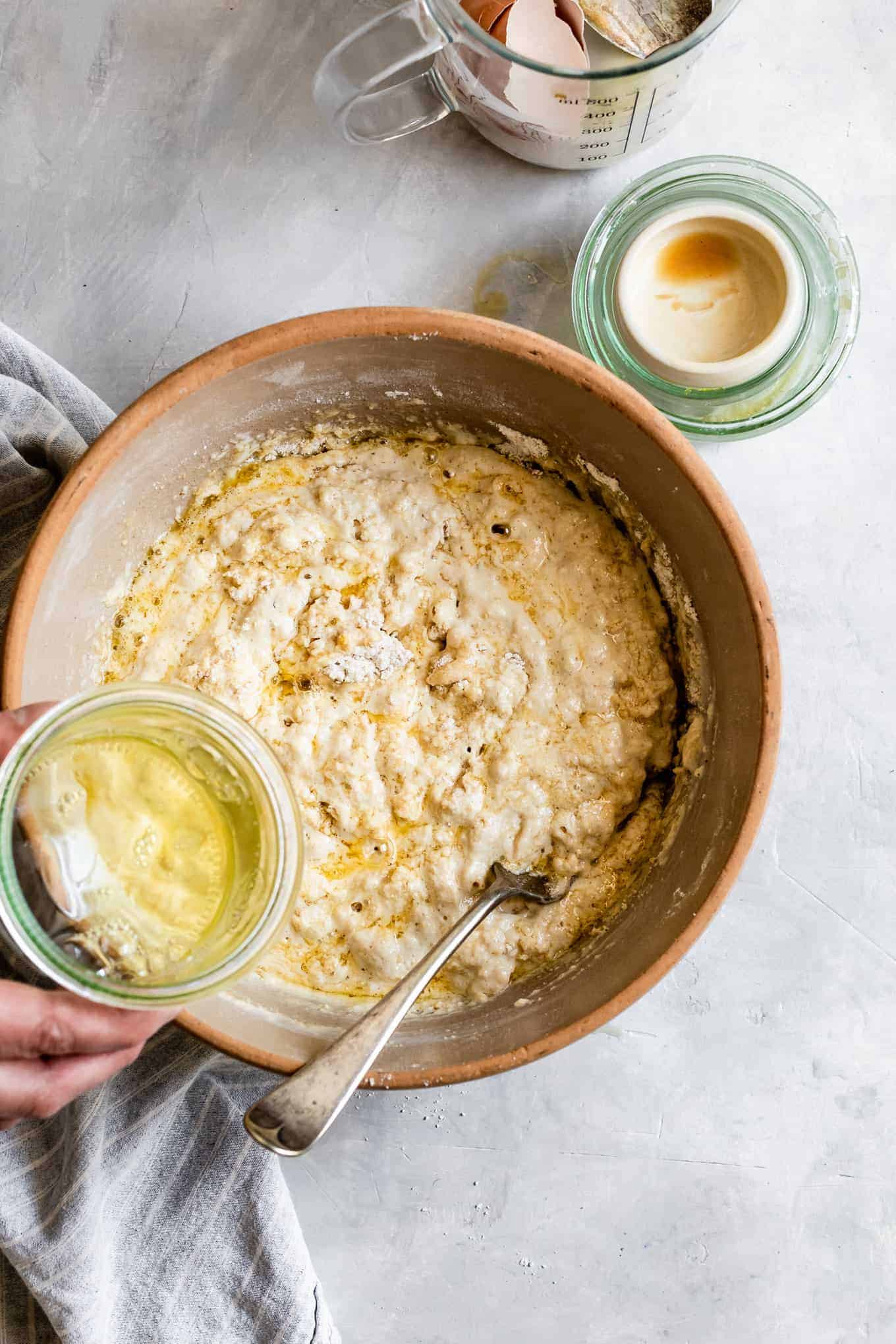

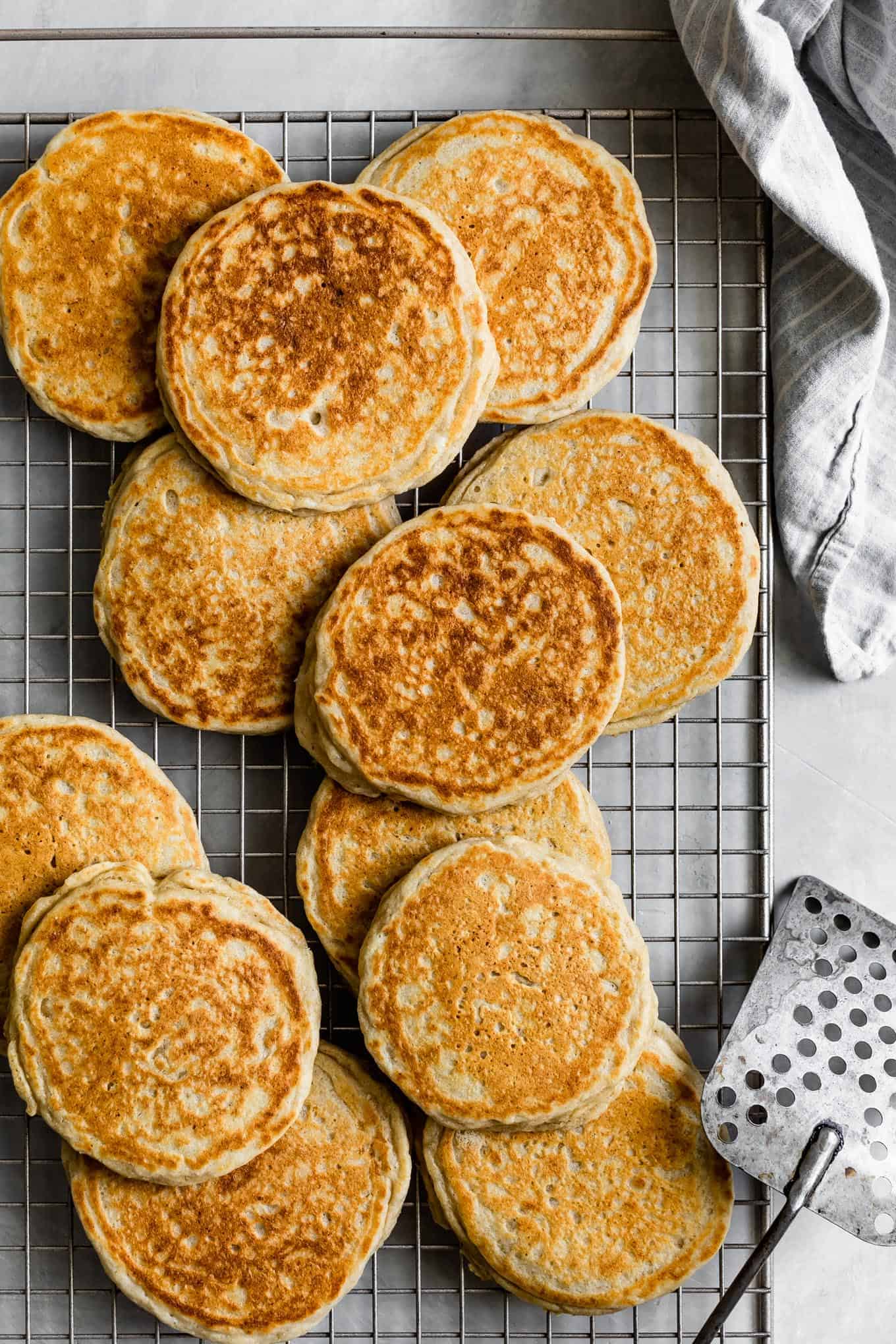
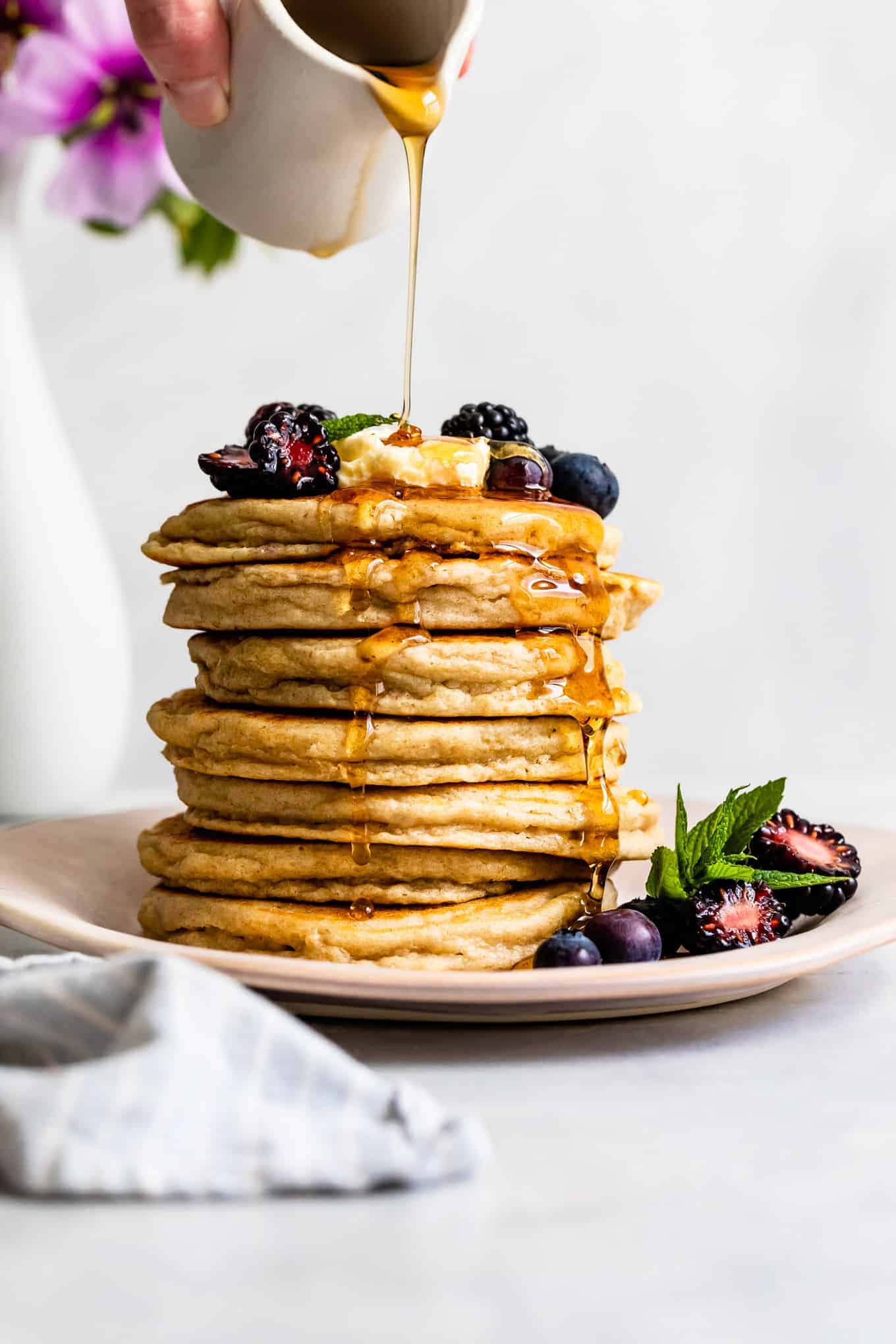
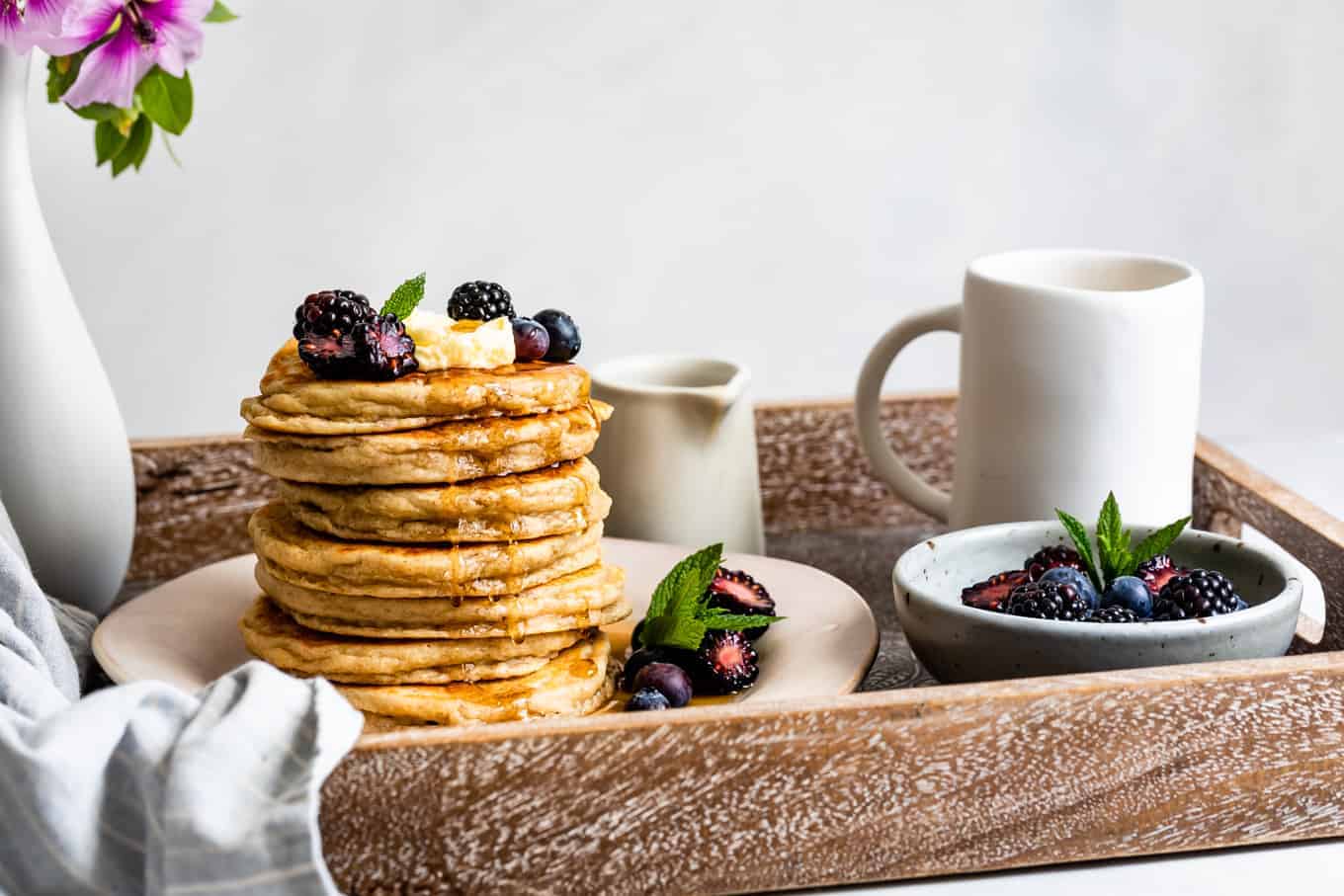
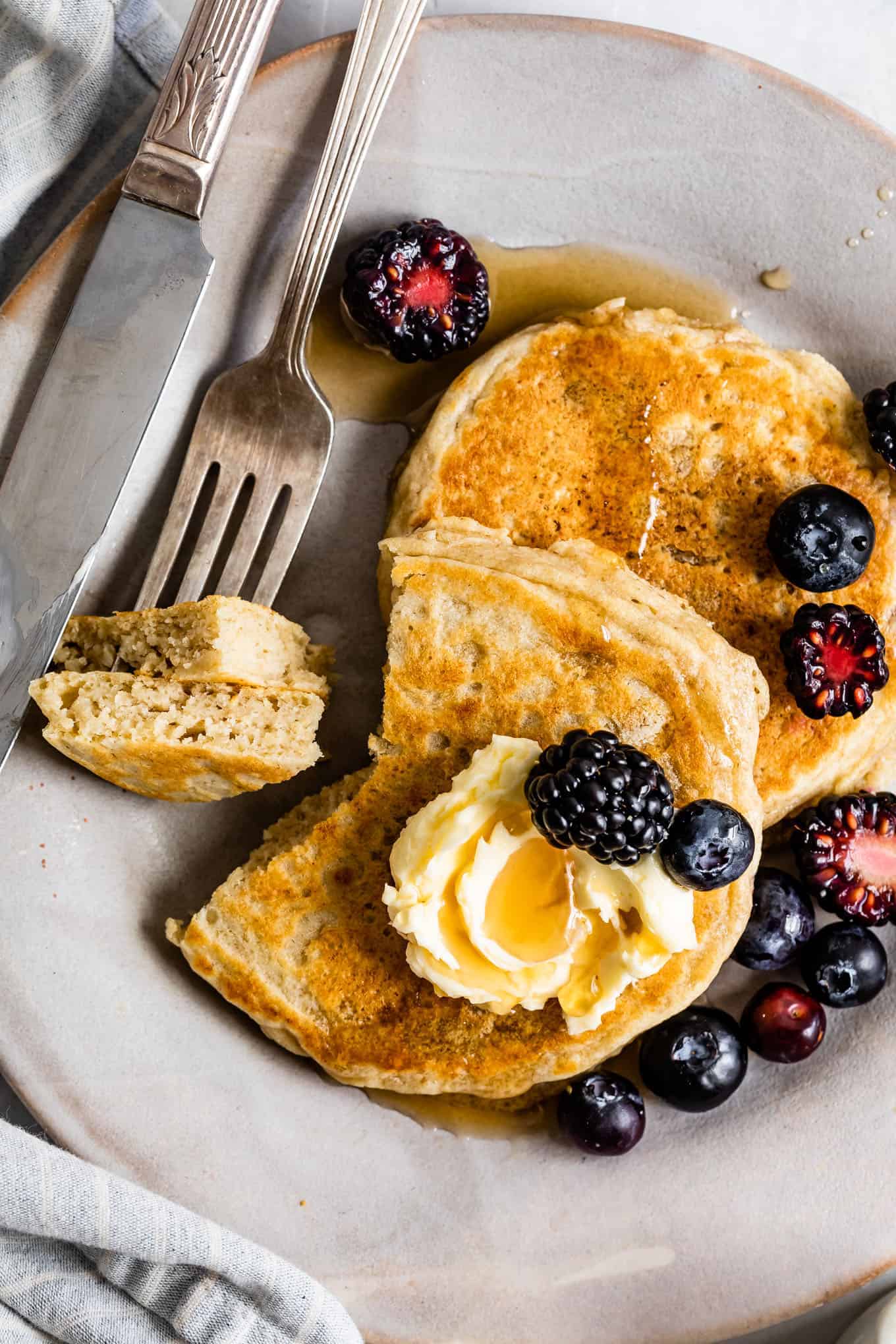
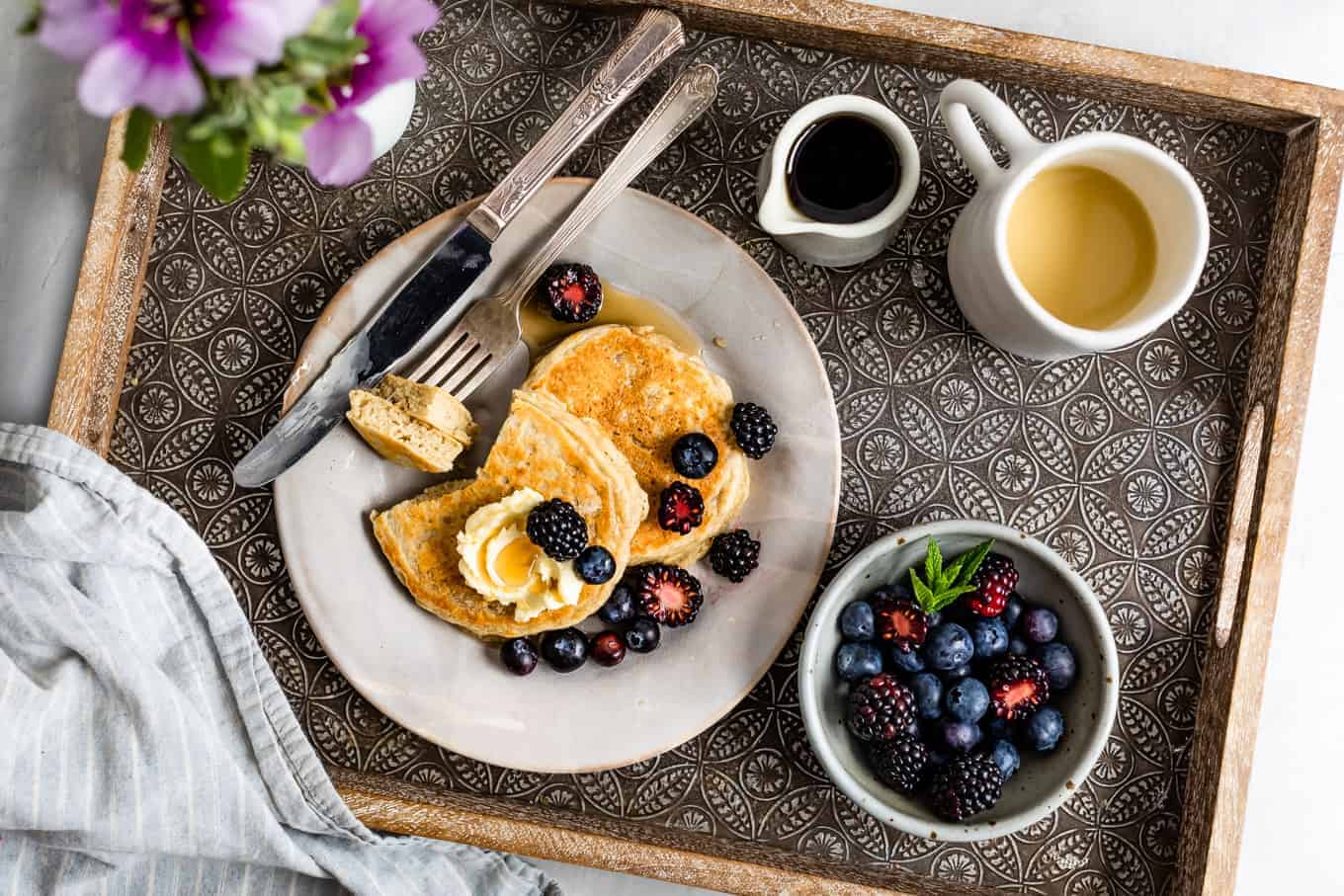
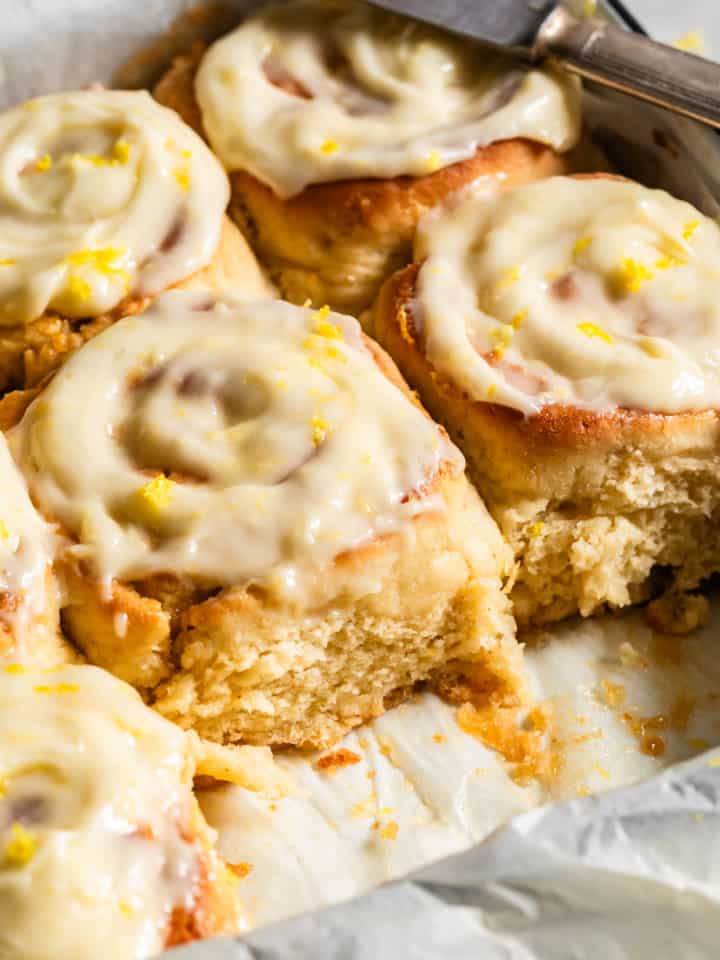
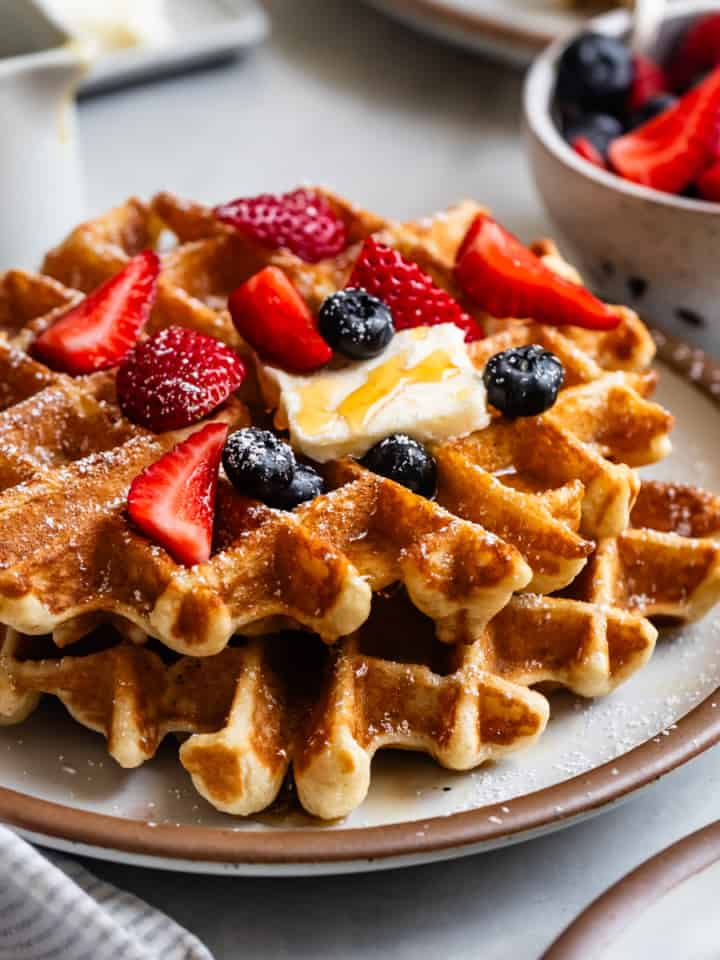
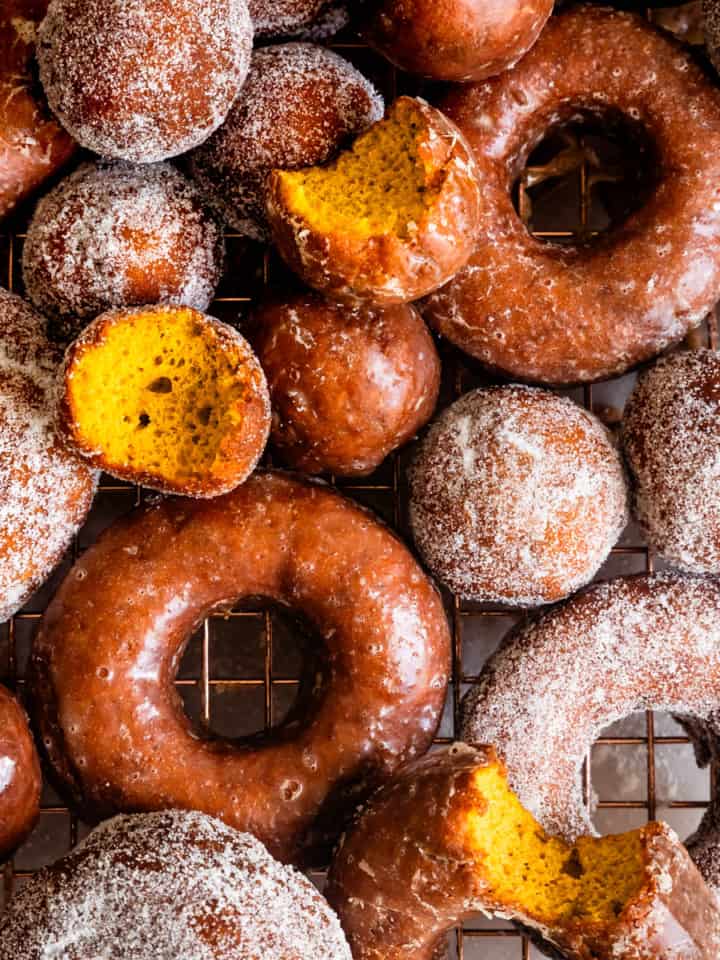
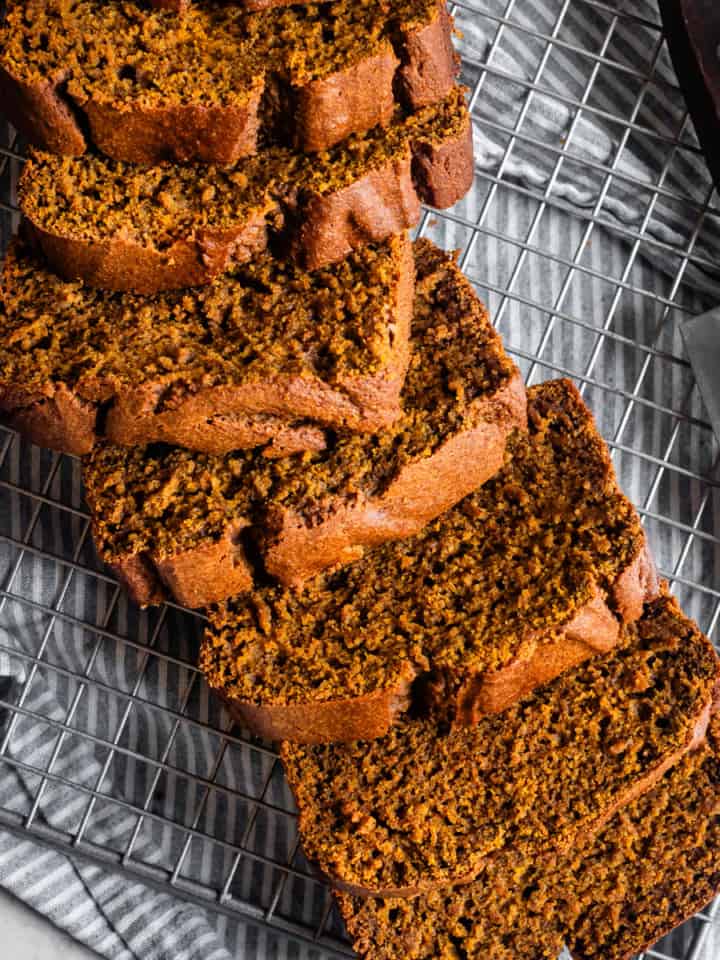


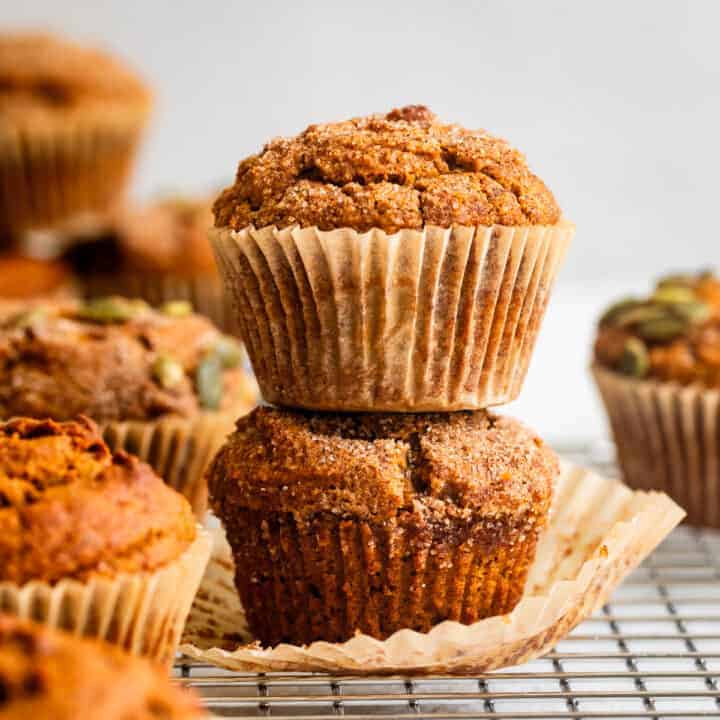

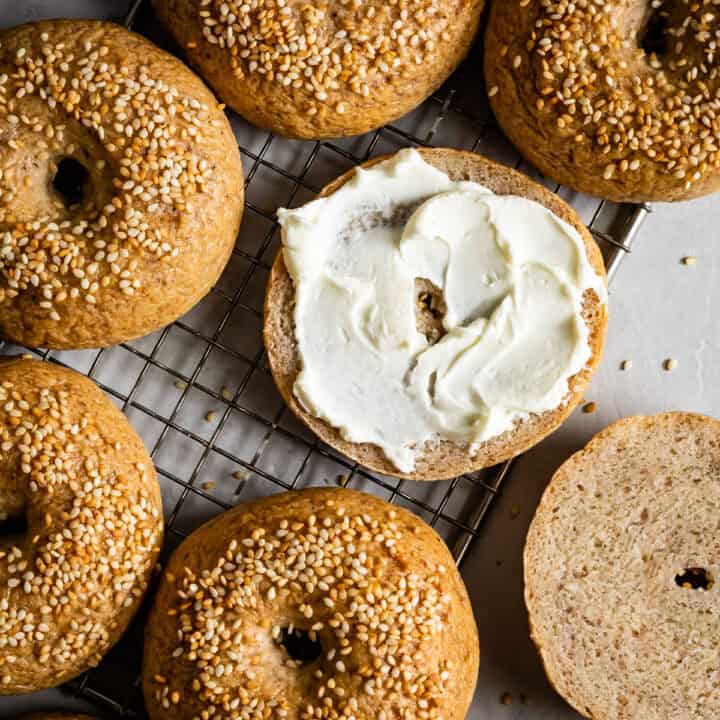
Dessert For Two -
These are so good! So FLUFFY!